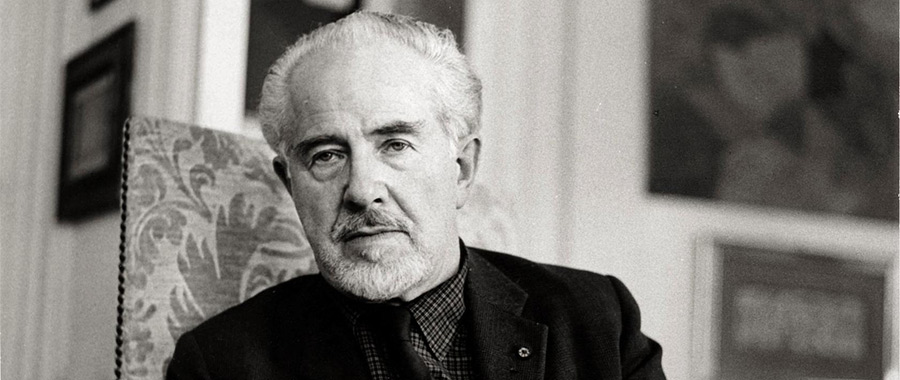The Baha’i Faith, a profound spiritual tradition, emerges as a beacon of modernity, encapsulating ideals and principles that resonate deeply within contemporary society. The unwritten nexus between art, faith, and modernism finds a profound articulation through Mark Tobey, the eminent American painter. Tobey’s assertion that the Baha’i Faith represents “the living core of modernism” invites a contemplative exploration of the profound intersectionality between his artistic philosophies and the teachings of the Baha’i Faith. This discourse seeks to delineate the salient aspects of this declaration, revealing the enriching dialogues between faith and creativity.
To appreciate Tobey’s perspective, one must first delve into the foundational tenets of Baha’i teachings. Central to these teachings is the principle of unity—unity of humanity, of religions, and of justice. Such an ethos encourages a transcendence beyond individuality, urging adherents to recognize the oneness of human existence. This universalist approach does not merely engage with lofty ideals but manifests practically in fostering collaboration and understanding across diverse cultural and spiritual landscapes. The essence of modernism, characterized by its critical engagement with progress and innovation, finds a direct correlation in the proactive and inclusive efforts championed by the Baha’i Faith.
Moreover, Tobey’s artistic pursuit epitomizes a synergistic approach that harmonizes with Baha’i principles. His technique of “white writing,” which involved layering his canvas with textured strokes of paint, evokes an ethereal quality that mirrors the spiritual quest intrinsic to Baha’i beliefs. This practice not only allows for the fluidity of expressions but also represents the dynamic interplay between the seen and the unseen—a key theme within Baha’i philosophy. Tobey’s endeavor to create art that transcends the physical realm resonates profoundly with the Baha’i ideal of elevating human consciousness beyond the mundane, advocating for a heightened spiritual awareness reflective of the divine.
Additionally, the Baha’i Faith espouses a distinctive understanding of knowledge, wherein the pursuit of education and scientific advancement is paramount. The teachings celebrate the compatibility of religion and science, urging believers to embrace intellectual inquiry while remaining anchored in spiritual values. This marriage of science and spirituality is reminiscent of the modernist paradigm, which often sought to challenge traditional narratives and promote intellectual progress. Tobey, through his artistic experimentation, exemplified this blending of rationality and creativity, urging observers to reflect critically on both the formal elements of art and the profundity of their implications. His work invites viewers into a meditative space where contemplation and aesthetic appreciation converge, fostering an intellectual dialogue that transcends conventional boundaries.
Furthermore, the dramatic expressiveness found within Tobey’s oeuvre serves as a testament to the transcendent nature of the Baha’i teachings. The movement towards abstraction in modern art parallels the quest for spiritual abstraction inherent within the Baha’i Faith. The latter encourages individuals to transcend the physical confines of earthly existence and seek harmony with the divine. Tobey’s canvases often capture this spiritual fervor, inviting viewers to experience the ineffable sensations associated with divine love and unity. This profound connection emphasizes the notion that art can serve as a vehicle for spiritual enlightenment, aligning seamlessly with Baha’i aspirations for empowerment and transformation.
Moreover, the historical context of Tobey’s life further elucidates his alignment with Baha’i principles. Living through a tumultuous era characterized by world wars and societal upheaval, Tobey sought refuge and meaning in profound spiritual inquiry. His affiliation with the Baha’i Faith provided a framework that resonated with his desire for peace and reconciliation. In times of conflict, the teachings of Baha’u’lláh advocate for an unwavering commitment to justice and societal progress, representing a clarion call for humanity to embrace a more harmonious existence. Tobey’s artwork can be seen as a visual response to these teachings, serving as an artistic ode to the tenets of peace and coexistence.
The importance of identity within the Baha’i Faith is also noteworthy. It champions the assertion that every individual possesses the potential for greatness, bound neither by societal constraints nor by inherited prejudices. This democratization of identity liberates artists like Tobey from the confines of traditional roles and expectations, allowing them to redefine their purpose within the broader canvas of humanity. Tobey’s journey as an artist reflects this fluidity of self-identity—embracing a Baha’i understanding of personal growth and community responsibility that encourages collective upliftment. The metaphor of the artist as a conduit of divine expression aligns with the Baha’i vision of a world transformed by the collective endeavors of its members willing to express their inherent creativity.
In conclusion, Mark Tobey’s designation of the Baha’i Faith as the “living core of modernism” unfolds an intricate tapestry of ideas that encapsulate the spirit of progress, unity, and creativity. Through exploring the interconnected dynamics of art and spirituality, it becomes evident that both realms serve as complementary pathways to understanding the complexities of human existence. The teachings of the Baha’i Faith illuminate the way forward, inviting not only personal introspection but also a communal embrace of diversity and unity through the lens of modernity. In this extraordinary synthesis of ideals, the Baha’i Faith emerges not merely as a spiritual path but as an embodiment of the zeitgeist—a living core that sustains the pursuit of enlightenment amidst our ever-evolving modern landscape.
